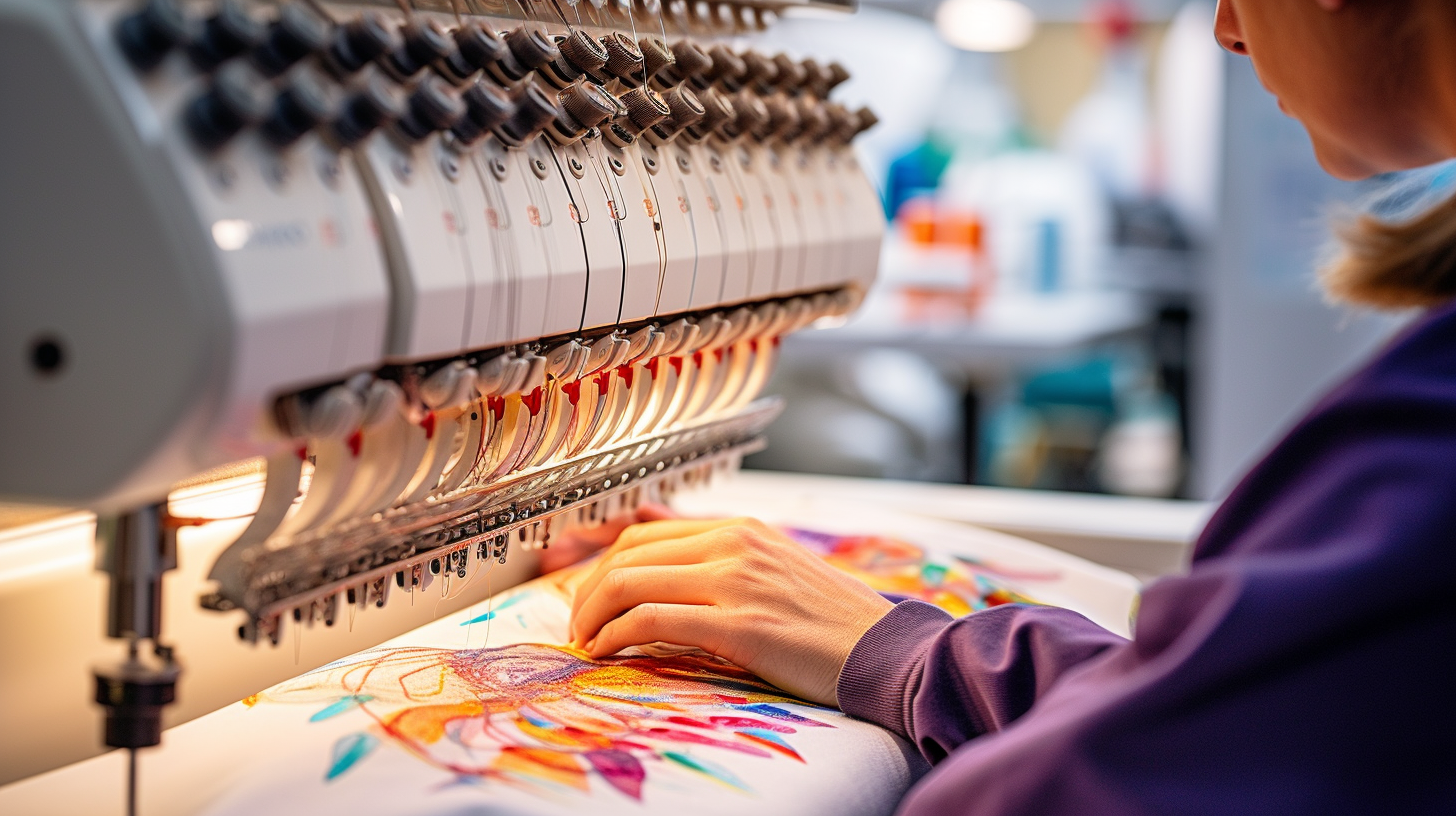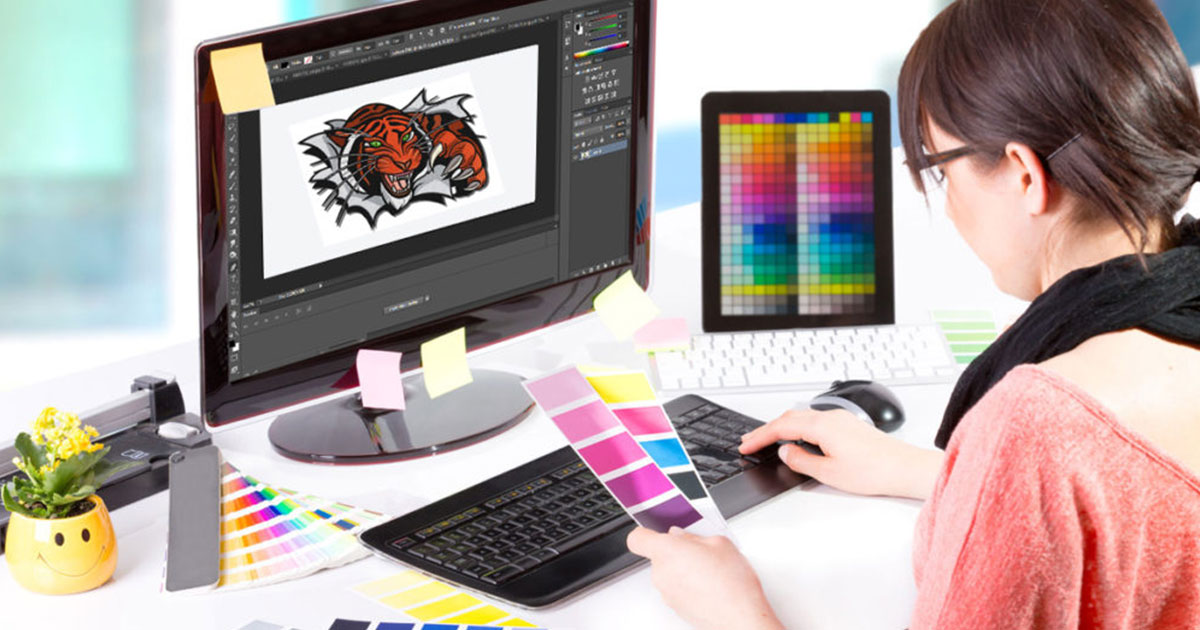Efficient Digitizing for Embroidery: Quick Turn-around
Efficient Digitizing for Embroidery: Quick Turn-around
Blog Article
Understanding the Needlework Digitizing Refine: Your Ultimate Overview
Needlework digitizing is a careful craft that calls for accuracy and knowledge to translate intricate styles right into digital formats for equipment embroidery. As craftsmens get started on this journey to master the needlework digitizing procedure, a comprehensive understanding of the essentials sets the structure for quality.

Comprehending Embroidery Digitizing Fundamentals
Needlework digitizing fundamentals develop the structure upon which intricate layouts are translated right into machine-readable formats for exact stitching. This preliminary action in the embroidery digitizing procedure is crucial for guaranteeing that the last embroidered product is a loyal depiction of the initial layout. Recognizing needlework digitizing basics involves comprehending vital concepts such as stitch kinds, stitch instructions, thickness, rug, and draw payment.
Sew kinds play a vital role in determining the visual and textural end result of the stitched style. By picking the ideal stitch type, whether it be satin, fill, or running stitch, digitizers can attain the wanted impact and enhance the overall top quality of the embroidery. Additionally, stitch direction influences the flow and dimension of the style, while density identifies the spacing and protection of the stitches.
Furthermore, underlay stitching offers stability to the layout by securing the material and protecting against distortion during the needlework process. Pull compensation is another necessary factor to consider to counteract the natural tendency of textile to agreement when sewn. Mastering these needlework digitizing essentials is fundamental for developing professional-quality stitched products.
Choosing the Right Digitizing Software
Picking the suitable digitizing software is a critical choice that substantially impacts the efficiency and quality of the needlework digitizing process. Digitizing for Embroidery. When selecting the appropriate digitizing software program, it is vital to consider aspects such as the complexity of designs you intend to create, the user-friendliness of the software program, the level of customer support used, and the compatibility with your embroidery machine
There are different digitizing software program choices available out there, ranging from basic programs for newbies to sophisticated software application for specialist digitizers. Some preferred options consist of Wilcom EmbroideryStudio, Hatch Needlework Software Application, and PulseID. These software application bundles use a variety of tools and attributes to assist you develop complex designs with simplicity.
Prior to choosing, it is a good idea to explore the different software options via totally free tests or trials to identify which one finest suits your requirements. In addition, reviewing reviews and looking for suggestions from knowledgeable digitizers can supply important insights right into the toughness and weaknesses of each software (Digitizing for Embroidery). By thoroughly assessing your demands and contrasting the attributes of various digitizing software, you can make an educated selection that improves your needlework digitizing operations
Digitizing Devices and Strategies

Optimizing Style Settings for Embroidery
Understanding the complexities of layout settings is essential in achieving optimum results in the needlework digitizing process, building upon the foundation laid by understanding digitizing tools and strategies. When enhancing layout settings for needlework, it is necessary to think about aspects such as stitch kind, density, underlay, pull settlement, and registration. Stitch kind choice impacts the overall feel and look of the design, with options like satin, fill, and running stitches supplying various textures and effects. Density refers to the spacing and density of stitches, affecting the style's insurance coverage and durability. Appropriate rug sewing provides stability and stops fabric distortion, particularly for complicated styles or on elastic products. Draw compensation readjusts for fabric stretch throughout sewing, guaranteeing accurate design replication. Registration setups straighten different elements of the layout accurately, keeping general layout honesty. By fine-tuning these style setups, embroiderers can improve the quality and precision of their embroidered productions.

Troubleshooting Common Digitizing Issues
When experiencing typical digitizing problems throughout the embroidery procedure, it is vital to recognize the source and execute efficient remedies immediately. One usual problem is stitch density issues, where stitches might be too thick, causing the fabric to pucker, or too thin, leading to gaps in the style. Changing the stitch thickness setups in the digitizing software application can help fix this issue.
An additional frequent difficulty is thread breaks throughout the embroidery process. This can take place because of various factors such as wrong stress settings, plain needles, or making use of low-grade string. Guaranteeing proper maintenance of the embroidery device, including normal needle modifications and tension modifications, can minimize the incident of string breaks.
In addition, layout registration mistakes can cause misaligned aspects within the embroidery style. Examining the layout alignment in the digitizing software and making essential changes before stitching can aid in avoiding this issue. By addressing these typical digitizing issues without delay and efficiently, you can make sure a smoother embroidery process and top notch completed items.
Final Thought
In final thought, grasping the needlework digitizing procedure requires a strong understanding of the my link basics, the best selection of basics software application, and expertise of devices and techniques. Maximizing design settings and repairing typical digitizing problems are vital steps in ensuring high-quality embroidery outcomes. By following these steps vigilantly, one can accomplish accuracy and effectiveness in the digitizing process.
Report this page